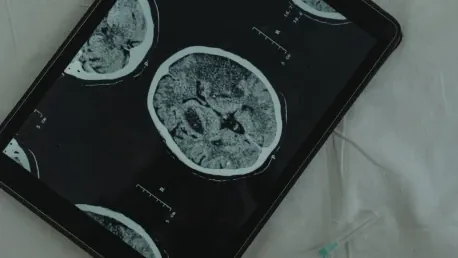The human brain’s ability to process sensory information is a marvel of biological engineering. Recent research from Harvard Medical School has uncovered new insights into how the brain processes touch and hearing simultaneously, revealing a complex interplay between these senses that enhances our sensory experiences. This discovery has significant implications for understanding sensory adaptation and developing advanced prosthetics for individuals with sensory impairments.
Beethoven’s Case Study: A Historical Perspective
The Genius of Beethoven
Ludwig van Beethoven, one of history’s greatest composers, continued to create music despite his severe hearing loss. His ability to compose masterpieces while being almost completely deaf has long fascinated scientists and music enthusiasts alike. This phenomenon raises intriguing questions about how the brain compensates for the loss of one sense by enhancing another. Beethoven’s legacy serves as a powerful testament to human resilience and adaptability, challenging our understanding of sensory compensation.
Sensory Compensation in Beethoven
Beethoven’s heightened sense of touch allowed him to feel the vibrations of his piano, providing him with an alternative way to experience music. This case exemplifies the brain’s remarkable adaptability and sets the stage for understanding the mechanisms behind sensory compensation. By relying on tactile feedback, Beethoven demonstrated that the human brain can repurpose available sensory inputs, illustrating the innate neural plasticity that underpins adaptation and compensation in response to sensory loss.
Research Overview: Harvard Medical School’s Study
Investigating Sensory Processing in Mice
Researchers at Harvard Medical School conducted a groundbreaking study, published in the journal Cell, to explore how the brain processes sensory signals. Using mice as subjects, the study aimed to identify the brain regions involved in processing both touch and hearing. The use of animal models allowed the researchers to delve into the neural circuits and understand the precise mechanisms by which sensory information is integrated and processed in the brain.
The Role of the Inferior Colliculus
The study revealed that the inferior colliculus, a region in the midbrain traditionally associated with auditory processing, also plays a significant role in processing high-frequency mechanical vibrations. This finding challenges the conventional view that touch is solely processed by the somatosensory cortex. By identifying the inferior colliculus as a key player in both auditory and tactile processing, the researchers have shifted the paradigm of how sensory information is organized and integrated in the brain.
Inferior Colliculus: A Central Hub for Sensory Integration
Dual Functionality of the Inferior Colliculus
The inferior colliculus was found to process both auditory and tactile signals, positioning it as a central hub for integrating sensory experiences. This dual functionality allows the brain to amplify sensory input, enhancing our perception of the environment. The ability of the inferior colliculus to handle multiple sensory modalities highlights its role in creating a unified sensory experience, crucial for navigating complex environments and responding to diverse stimuli.
Implications for Sensory Adaptation
The discovery of the inferior colliculus’s role in processing touch and hearing has broader implications for understanding sensory adaptation. It provides insights into how the brain compensates for the loss of one sense by enhancing another, a phenomenon observed in various species. This enhanced understanding of sensory integration and plasticity can inform the development of new therapies and assistive technologies, improving the quality of life for individuals with sensory impairments.
Pacinian Corpuscles: Key Players in Tactile Sensitivity
Structure and Function of Pacinian Corpuscles
Pacinian corpuscles are specialized receptors in the skin that detect high-frequency vibrations. These intricate structures play a crucial role in transmitting tactile signals to the brain, contributing to our sense of touch. Their complex anatomy and sensitivity to mechanical stimuli make them indispensable for detailed tactile feedback, providing the brain with vital information about surface textures and vibrations.
Contribution to Sensory Processing
The study highlighted the significant role of Pacinian corpuscles in enhancing sensory perception. By transmitting high-frequency vibrations to the inferior colliculus, these receptors enable the brain to integrate and amplify sensory input from both touch and hearing. Understanding the contribution of Pacinian corpuscles to sensory integration supports the development of advanced sensory prosthetics and improves our grasp of how sensory systems cooperate to create coherent perceptual experiences.
Evolutionary Perspective: Sensory Adaptation Across Species
Survival Mechanisms in Animals
From an evolutionary standpoint, the ability to detect vibrations is essential for survival. Animals, including humans, have developed neural mechanisms that allow them to compensate for the loss of one sensory modality by enhancing another. This evolutionary advantage has ensured that organisms can maintain environmental awareness and respond to threats even when specific sensory inputs are compromised.
Insights into Neural Plasticity
The research offers valuable insights into neural plasticity, the brain’s ability to adapt and reorganize itself. Understanding these mechanisms can inform the development of new therapies and technologies for individuals with sensory impairments. By studying how animals adapt to sensory loss, scientists can design interventions that exploit the brain’s innate flexibility, potentially restoring sensory functions or mitigating the effects of sensory deficits.
Prosthetic and Medical Applications
Advanced Prosthetics for Hearing Loss
The findings hold promise for developing advanced prosthetics that convert sound into tactile vibrations. These devices could improve the sensory experiences of individuals with hearing loss by utilizing their tactile sensitivity. By leveraging the brain’s natural ability to integrate multiple sensory inputs, these prosthetics can offer more nuanced and effective solutions, enhancing the overall sensory experience for users.
Broader Medical Implications
Beyond prosthetics, the research has broader medical implications. It can inform treatments for conditions like autism and chronic neuropathy, where sensory processing is disrupted, and enhance our understanding of sensory integration and compensation. The insights gained from this study pave the way for novel therapeutic approaches and diagnostic tools, ultimately contributing to better management of sensory processing disorders.
Research Methodology: Exploring Sensory Responses
Genetically Modified Mice
The study used genetically modified mice to observe responses to mechanical vibrations and auditory stimuli. By recording neuronal activity in the thalamus and inferior colliculus, researchers were able to identify distinct responses to different vibration frequencies. This approach allowed for precise control over experimental variables, providing clear evidence of how specific brain regions respond to sensory inputs.
Neuronal Recordings and Sensory Sensitivity
Recordings from neurons in the inferior colliculus demonstrated heightened sensitivity to high-frequency inputs. This finding underscores the importance of this brain region in processing and integrating sensory signals. By mapping neuronal activity, researchers could elucidate the pathways through which tactile and auditory information converges, offering detailed insights into the brain’s sensory processing capabilities.
Future Directions: Enhancing Sensory Experiences
Potential for New Technologies
The research opens new avenues for developing technologies that enhance sensory experiences. By leveraging the brain’s ability to integrate touch and hearing, new devices could be created to improve the quality of life for individuals with sensory impairments. These innovations could transform the way sensory information is transmitted and perceived, leading to more effective and user-friendly assistive technologies.
Ongoing Research and Development
The brain’s capability to process sensory information is truly a marvel of biological engineering. Recently, researchers at Harvard Medical School have uncovered fascinating new insights into how the brain manages touch and hearing at the same time. This research highlights an intricate interplay between these senses, which enriches our overall sensory experiences. Understanding this connection is crucial, as it can significantly impact our knowledge of sensory adaptation. Moreover, it holds promise for the development of advanced prosthetics and other assistive technologies for individuals suffering from sensory impairments, potentially improving their quality of life. By revealing the sophisticated ways in which our brain handles multiple sensory inputs, this research paves the way for innovations in treating sensory disorders and designing better prosthetic devices. These discoveries not only deepen our understanding of human biology but also contribute to medical advancements, enhancing how we interact with and perceive the world around us.









